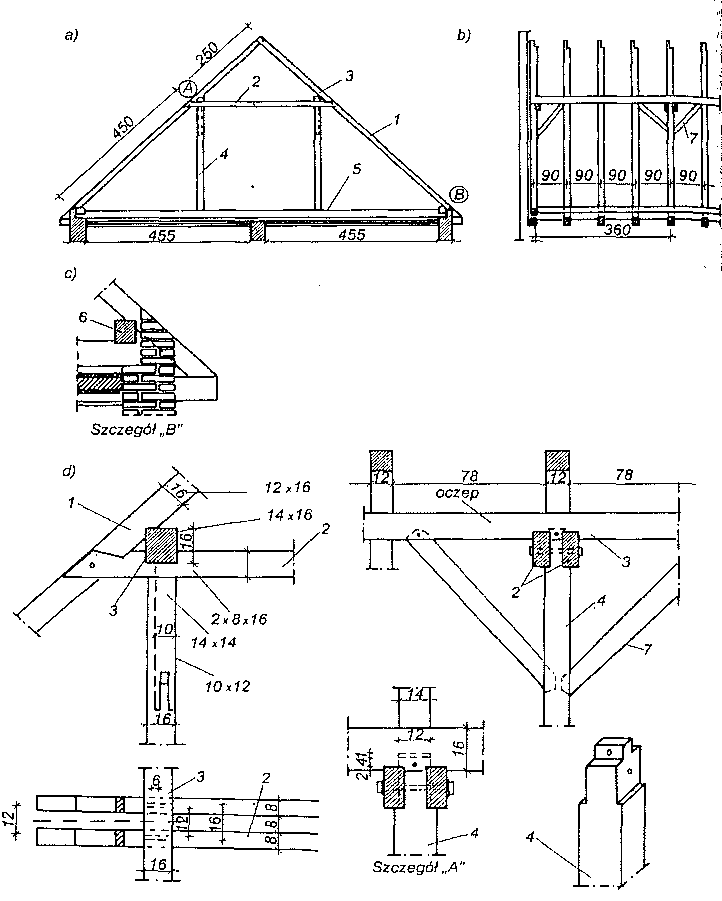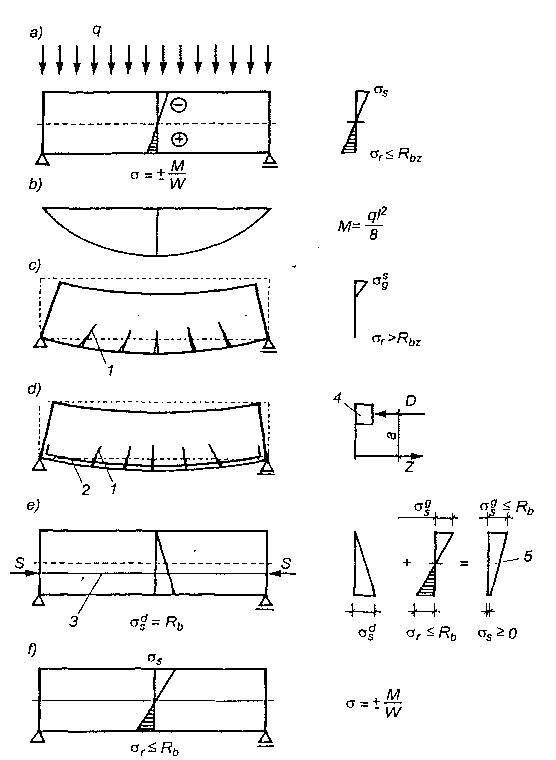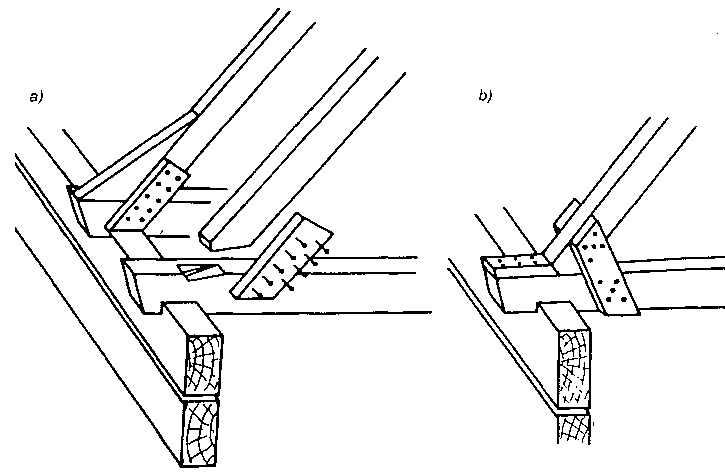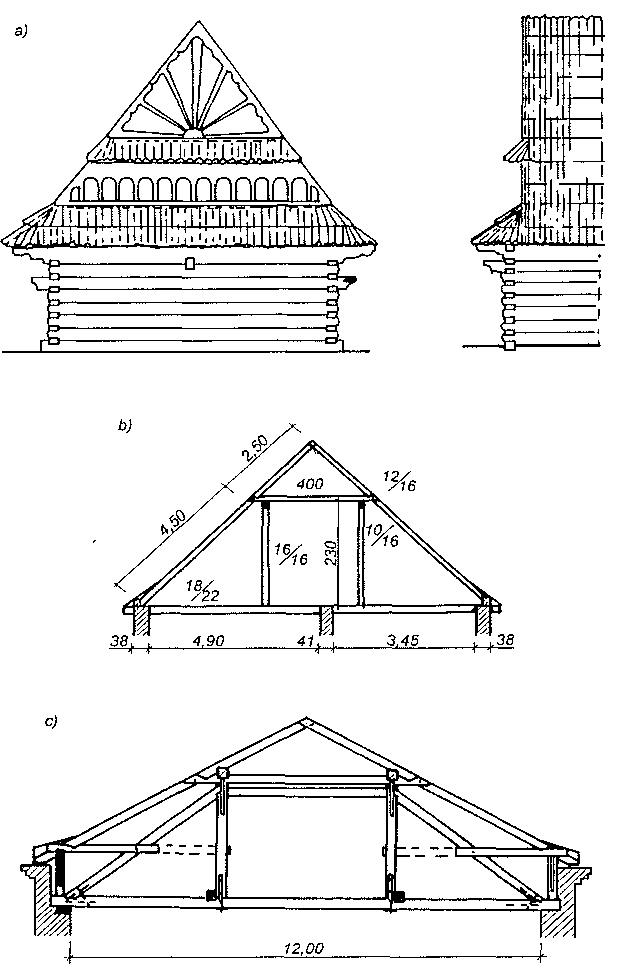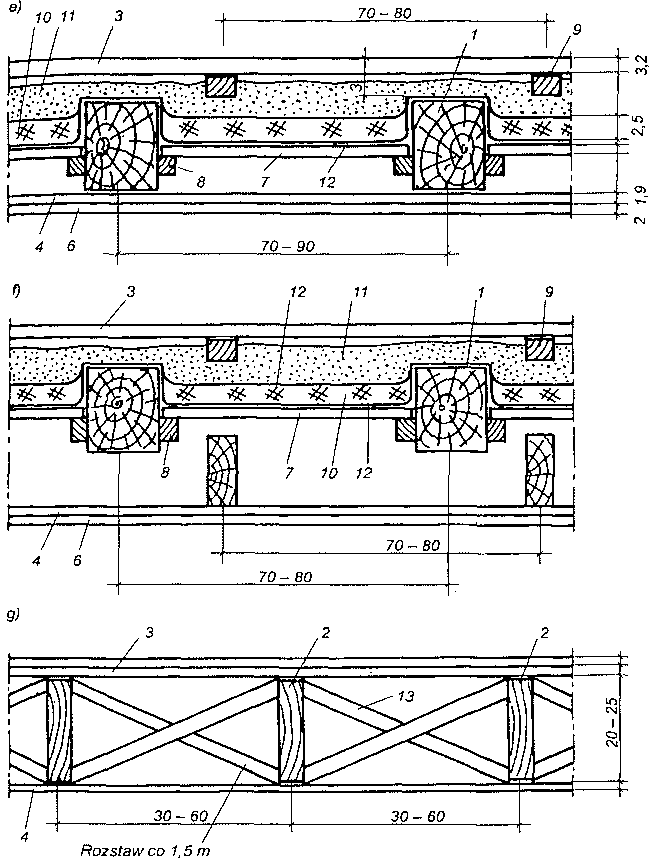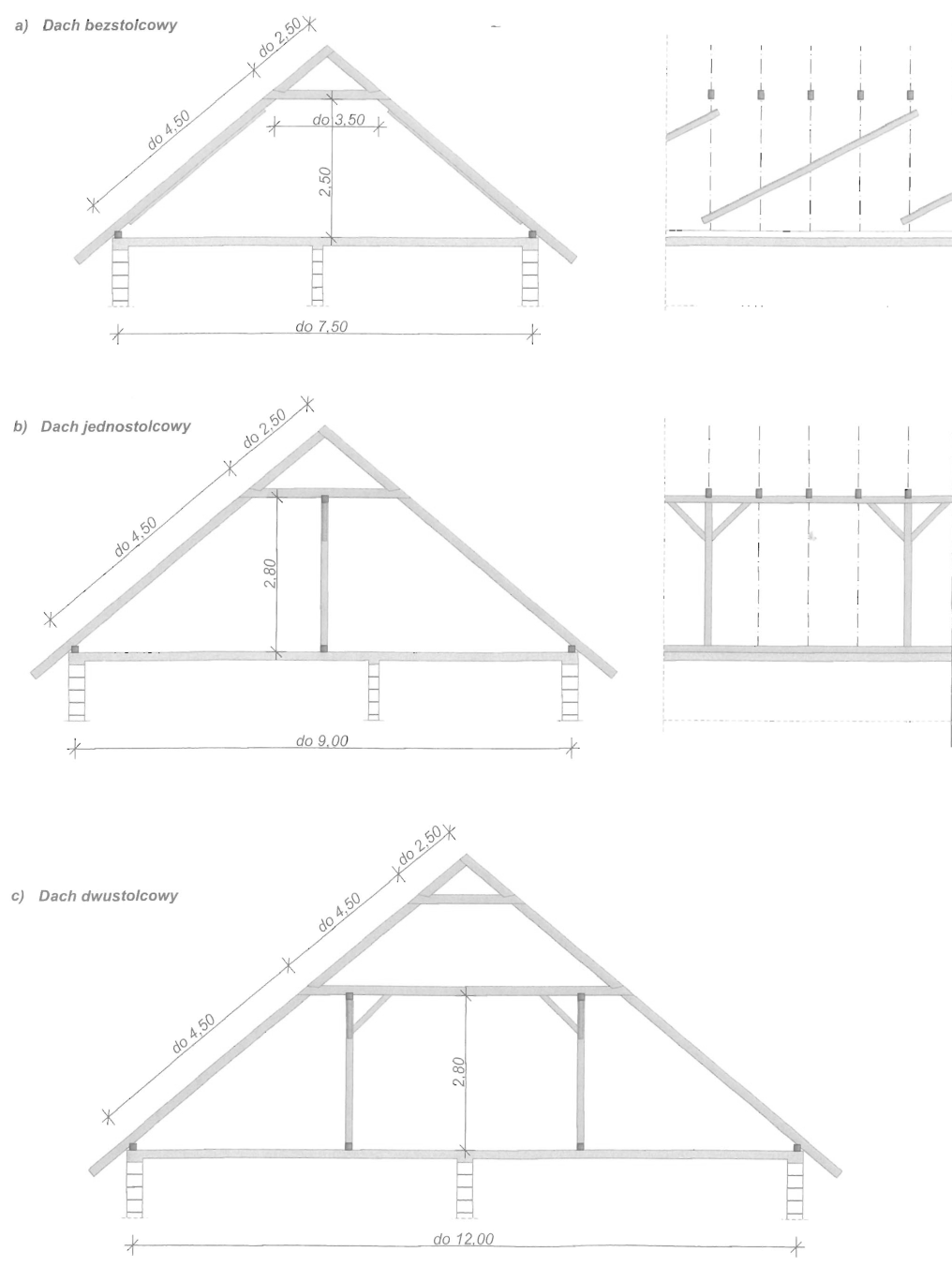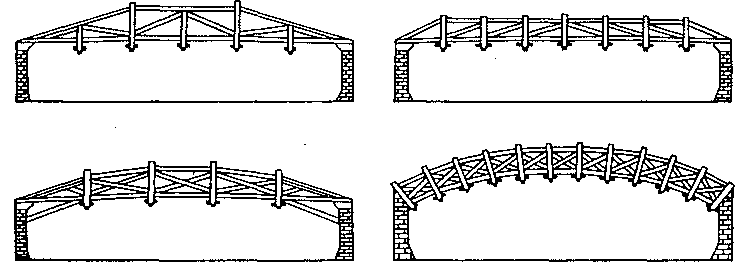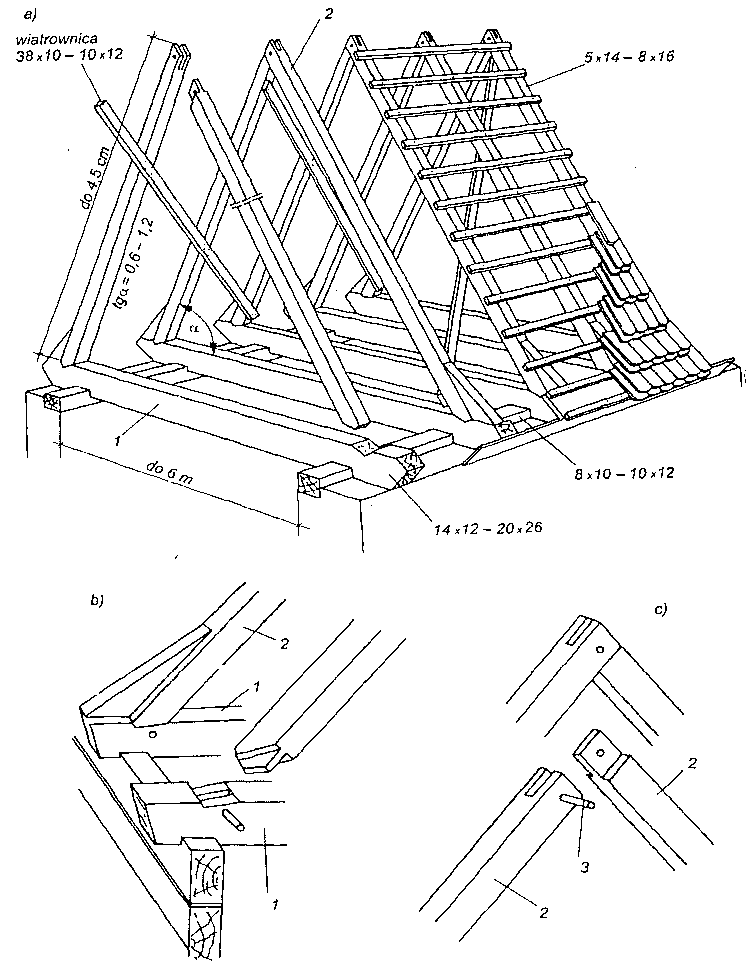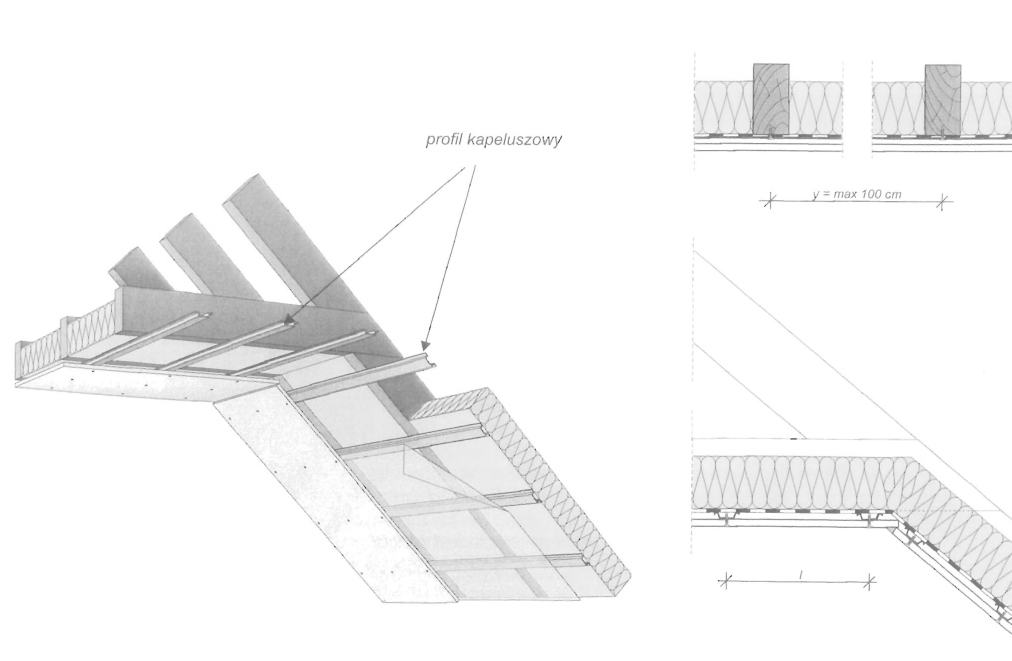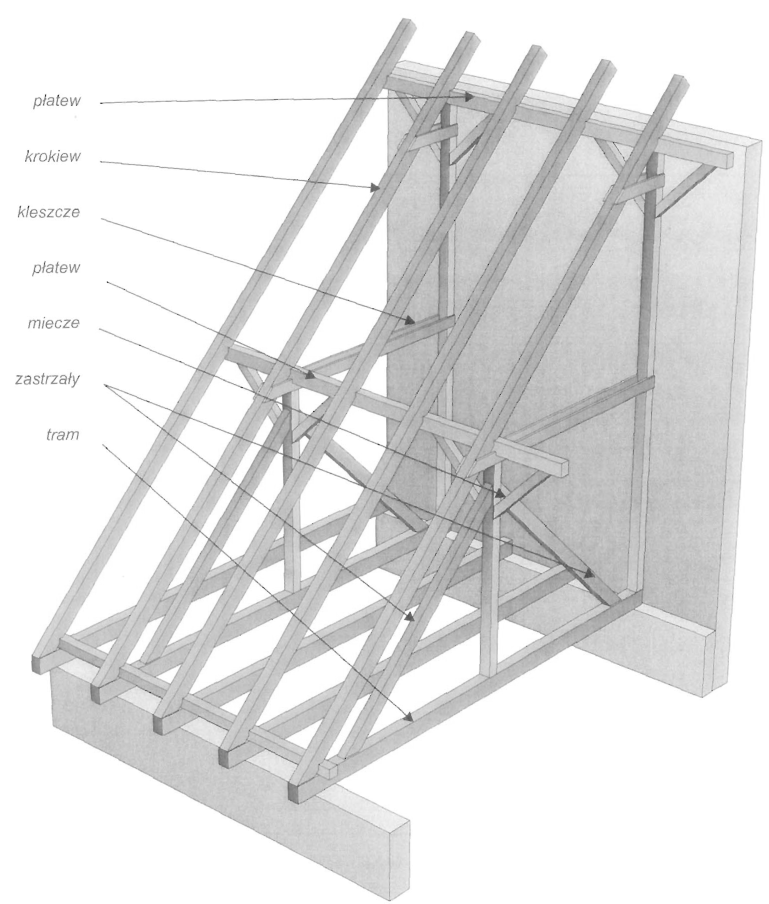Rodzaje połączeń ciesielskich.
W kształtowaniu dachowych konstrukcji ciesielskich unikano stosowania elementów rozciąganych. Wynikało to stąd, że połączenia ciesielskie na wręby, czopy i gniazda oraz nakładki nie dają możliwości przenoszenia sił rozciągających. Elementy rozciągane stosowano głównie w wiązarach dachowych typu wieszakowego. Wieszaki są rozciągane pod działaniem obciążenia od stropu zawieszonego za pośrednictwem strzemion z płaskowników stalowych. Siła rozciągająca w wieszaku wywołuje siły ściskające w zastrzałach. Składowa pozioma siły ściskającej w zastrzale wywołuje rozciąganie belki stropowej zawieszonej w części środkowej na wieszakach. Rozpiętość wiązara (rozstaw podpór) jest zależna od długości belki, która spełnia rolę ściągu. Belka ta, wykonywana jest przeważnie z jednego odcinka nie łączonego na długości.
W drewnianych konstrukcjach inżynierskich stosuje się zarówno elementy ściskane, jak i rozciągane. Takie kształtowanie konstrukcji jest możliwe ponieważ przyjęto inny od ciesielskiego sposób łączenia elementów z zastosowaniem., łączników metalowych przedstawionych na rysunku i kleju.
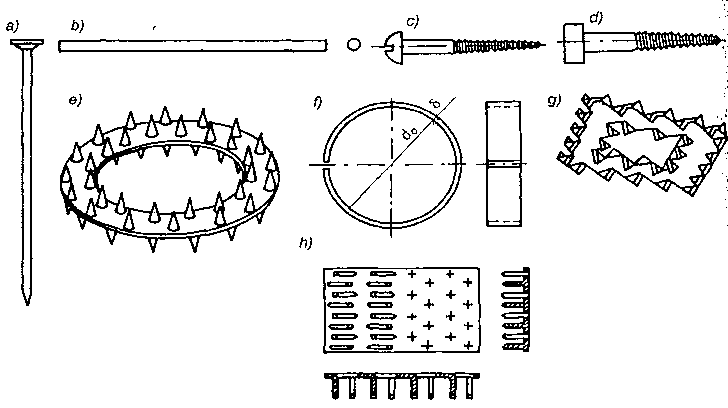 Łączniki do konstrukcji drewnianych: a) gwóźdź, b) sworzeń, c), d) wkręty, e) nakładka wciskana Geka, f) pierścień gładki rozcięty, g) płytka wciskana Alligator, h) płytki wciskane Gang Nail.
Łączniki do konstrukcji drewnianych: a) gwóźdź, b) sworzeń, c), d) wkręty, e) nakładka wciskana Geka, f) pierścień gładki rozcięty, g) płytka wciskana Alligator, h) płytki wciskane Gang Nail.
Dzięki uproszczeniu połączeń elementów, wykonanie drewnianych konstrukcji inżynierskich jest w wielu przypadkach mniej skomplikowane niż ciesielskich. Ponadto do wykonania konstrukcji może być użyta tarcica gorszych gatunków oraz mniejszych długości niż stosuje się w konstrukcjach ciesielskich.
